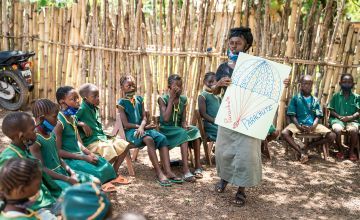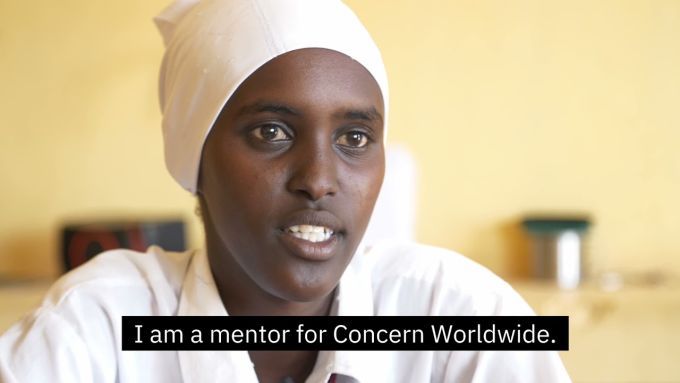
Knowledge Hub
Education has been recognised by the UN as being of paramount importance, so much so that it has been given its own Sustainable Development Goal. SDG 4 is designed to “Ensure inclusive and equitable quality education and promote lifelong learning opportunities for all”.
It is indisputably one of the most important elements of a thriving society - the more educated a population the better a society functions economically, mentally, and physically. It is a key factor in reducing poverty - giving individuals the tools to become self-sufficient enables access to opportunities that unlock future success. Yet a disparity remains across the world, reflected by the fact that students in low-income countries perform worse than 95% of those from wealthy OECD countries.
Literate women for a prosperous world
No group is more affected than girls - 130 million girls globally are out of school. A World Bank study estimates that the “limited educational opportunities for girls, and barriers to completing 12 years of education, cost countries between $15 trillion and $30 trillion in lost lifetime productivity and earnings.” This is not only an economic loss but also a huge societal loss. There are numerous positive ripple effects that come from having more educated women. As eloquently phrased by Michelle Obama: “When girls are educated, their countries become stronger and more prosperous”.
It’s clear that educating girls has been a pillar of global development policies for many years and there has been much research and campaigning around improving their access to education, but somehow the fact remains it has not gone nearly far enough as inequality and its negative consequences are still keenly felt to this day.

In the Global South the figures are particularly striking. Fewer than 67% of girls in low-income countries complete primary school and only around 33% finish secondary school. A girl living in poverty in Kenya has a 1 in 250 chance of pursuing studies beyond secondary school, compared to a 1 in 3 chance for a boy from a wealthy family in Kenya.
Here girls also face countless barriers to accessing education such as patriarchy, child marriage, school-based gender violence and a lack of menstrual health management support, which are all considerable obstacles to learning development. A UNESCO study has shown that if girls were to receive a secondary education there would be a 64% reduction in early and forced child marriages – which are inextricably linked to the risk of death in childbirth. It also showed that if all girls received primary education that over 189,000 maternal deaths would be avoided annually, equivalent to a two-thirds decrease.

However, as shown in Malawi, merely increasing the number of girls in classrooms is not a metric of successful quality education. Malawi’s recent rapid increase of pupils in classrooms did not adequately factor in the resulting need for more infrastructure, materials, and teachers. As a result, only 40% of young adults in the Balaka district who had completed primary school could read and comprehend a simple sentence in Chichewa, (Malawi’s official language).
The quality of formal education is just as important as the number of pupils in the classroom. This is not to say that these efforts should be discounted, but rather that they should be seen as building blocks for further improvements to girls’ education. Evidence shows that individuals who live in a community with higher overall levels of education, though they may not be schooled directly, still benefit.
The wider curriculum

It's also important to consider that education is not limited to what one traditionally learns in the classroom. There is a wider ‘informal’ curriculum that goes beyond this. At school girls can learn more about health and personal hygiene and how to better care for themselves thus improving their quality of life considerably. Here they can also learn the tools that allow them to challenge the patriarchal systems that have perpetuated education inequity. There are so many components to education and being in school, which those who have the privilege of accessing often take for granted.
Concern Worldwide’s Education Policy adheres to the extended curriculum model and aims to sustainably improve the lives of extremely poor and vulnerable children by increasing access to good quality primary education and supporting child well-being. An example of this in practice is the organisation’s ‘Education in Emergencies’ project which during 2021 has been driving access to inclusive and quality education in a safe and protective learning environment for girls affected by the Lake Chad Basin conflict in Diffa Region, Niger. As one of the poorest regions in the world, fraught with security risks, the area sees a high proportion of girls out-of-school, meaning they are highly vulnerable to early marriage and gender-based violence. Constructing classrooms, fostering teacher training to raise the standard of education and galvanizing support through community outreach has substantially improved the outlook not only for girls in the programme, but the whole community.
Education carries on throughout a lifetime and that must also be encouraged for grown women who may have missed out on the opportunity in their youth. This is typified by Concern Worldwide’s work in Sierra Leone which sees mothers and daughters learning basic numeracy side by side, contributing to their life skills of being able to manage finances and investigate different ways to generate livelihoods.
Turning the agenda into action
Investing in girl’s education is the very best thing we can do, not just for our daughters and granddaughters, but for their families, their communities, and their countries.
We’ve seen that education has the power to change the world. Women in developing communities are the ones with the least access to education and their participation in society is a priority for a more equitable world.
Women are an untapped resource to the tune of tens of trillions of dollars, this is a non-negligible sum and it’s a wonder that their education is not receiving more investment and development. Beyond monetary value, women are integral members of society who all offer a variety of unique perspectives due to the nature of their diverse experiences. Challenges lay ahead in the coming years but having more women at the table will allow for more creative and bold solutions to emerge to end poverty once and for all.
Take a closer look at Concern’s education programmes.
Sign up to Women of Concern to receive thought-provoking emails and invites to events where you will hear from women on the ground at the forefront of creating change.
Other ways to help
Donate now
Give a one-off, or a monthly, donation today.
Join an event
From mountain trekking to marathon running, join us for one of our many exciting outdoor events!
Buy a gift
With an extensive range of alternative gifts, we have something to suit everybody.
Leave a gift in your will
Leave the world a better place with a life-changing legacy.
Become a corporate supporter
We partner with a range of organisations that share our passion and the results have been fantastic.
Create your own fundraising event
Raise money for Concern by organising your own charity fundraising event.






